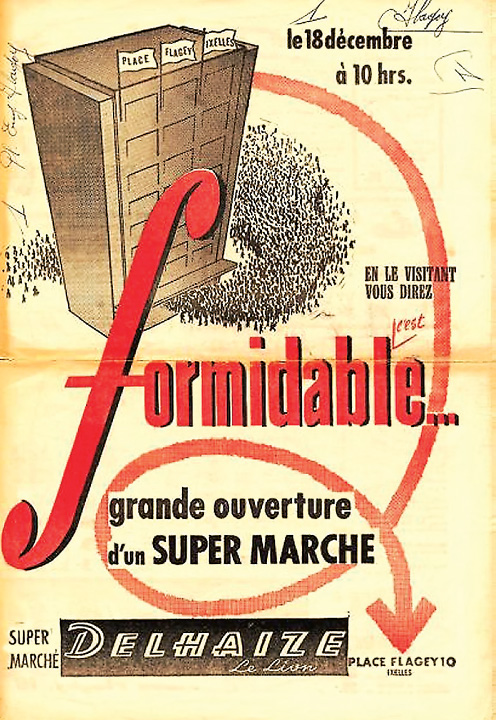A History of Western Society: Printed Page 976
LIVING IN THE PAST
The Supermarket Revolution
I n February 1961 Supermarket Italiani opened its first supermarket in Florence, Italy, home of Renaissance art and culture. The opening was an apparent triumph: police were needed to control the fifteen thousand customers who mobbed the store. Owned by a U.S.-based multinational corporation, Supermarket Italiani proudly advertised “self-service” — in English — the slogan expressing a new cachet for all things American. Yet all was not well. Small grocers greeted the supermarket with strikes. Demonstrators called for boycotts. Angry letters to local newspapers complained that Italian traditions were in decay.
No wonder. The supermarket brought dramatic changes. For centuries Florentines — like most Europeans — had bought fresh food from local butchers, bakers, and produce dealers. In tiny neighborhood stores, a shopkeeper greeted customers, and, while gossiping about neighborhood events, took an order, calculated the price, and weighed and wrapped the goods.
Shopping in an American-style supermarket changed all that. Consumers entered a well-lit, much larger store and filled their carts from long aisles stocked with pre-packaged, pre-priced goods. Frozen meat and canned vegetables meant that once-seasonal items were now available year-round. Competing brands introduced many versions of the same product, and advertising campaigns and cut-rate pricing enticed customers.
The new approach to shopping unleashed a host of changes. New farming methods, distribution networks, and packaging and advertising industries emerged. Huge international chains arose, such as Aldi, which started as a small chain in postwar Germany and now owns over eight thousand stores around the world. At home, meal plans, recipes, budgets, and shopping styles were altered. Supermarkets also transformed city space. Large stores on busy roads meant more traffic, and automobiles and parking lots threatened the existence of neighborhood stores. Though they never entirely displaced small grocers or dominated the food retail sector, as in the United States, by the 1980s supermarkets were part of everyday life in Europe, vivid evidence of how the consumer revolution transformed the way Europeans shopped for, ate, and thought about food.



QUESTIONS FOR ANALYSIS
Question
Why did Italians greet the arrival of supermarket shopping with both protest and enthusiasm?
Question
In what ways does the supermarket exemplify the consumer revolution that swept through Europe in the late 1950s and the 1960s? What were its implications for family life?